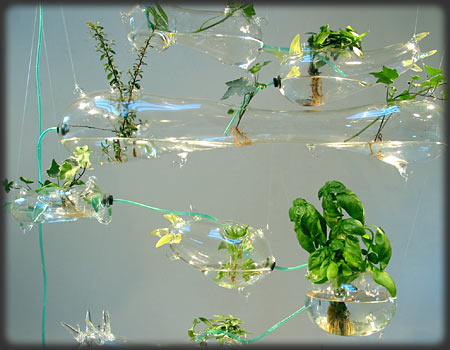




 Full view of Farm Fountain created by Amy Youngs and Ken Rinaldo
Full view of Farm Fountain created by Amy Youngs and Ken Rinaldo 
 The individual containers are created so that light is able to pass through, and so the viewer is able to see the roots of the plants.
The individual containers are created so that light is able to pass through, and so the viewer is able to see the roots of the plants.

 of a traditional sculpture or painting that is really for viewing only and isn’t interacted with. However, Youngs’ piece is not only interactive but alive and growing. Everyday the piece changes and helps to feed the people that use it.
of a traditional sculpture or painting that is really for viewing only and isn’t interacted with. However, Youngs’ piece is not only interactive but alive and growing. Everyday the piece changes and helps to feed the people that use it.I feel as though an important element in this piece that I am especially drawn to is the use of light. Although the use light serves a practical purpose, growing the plants, it also serves as a connection from the plants to the fish. Because all the plants are illuminated, they are visually connected. This helps to emphasize the important idea that nature is connected, an idea that is already strongly represented in the fountain’s ability to thrive as a self-contained ecosystem.
Young states that her work is created to reflect how technology changes and effects both nature and humans. Also she explores how we shape and idealize nature as humans by using technology. Source